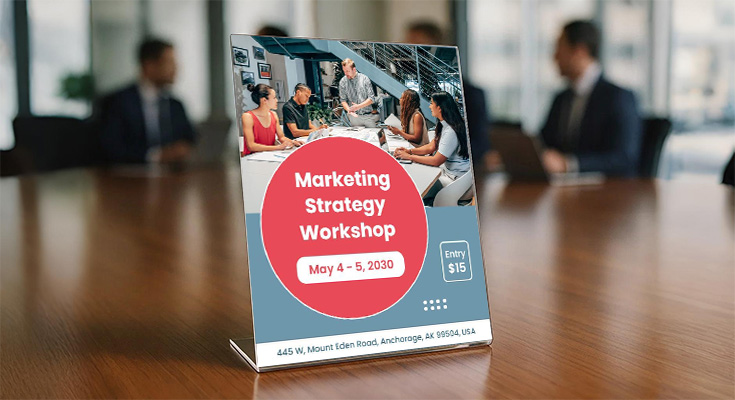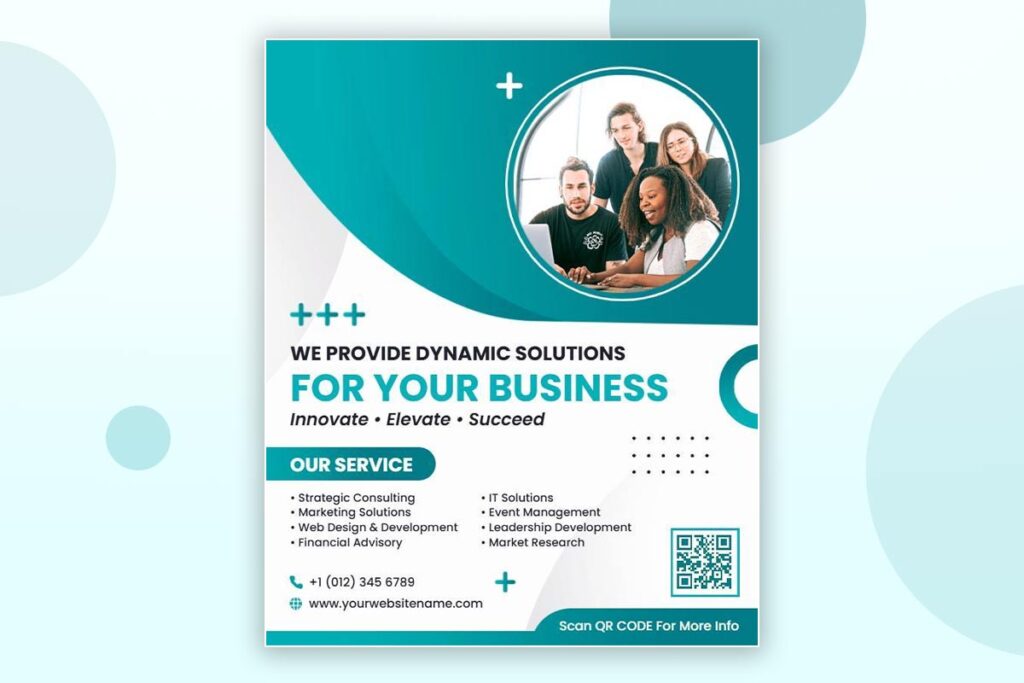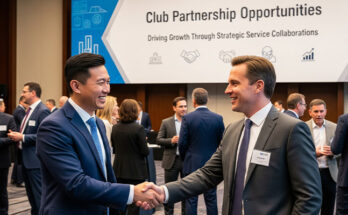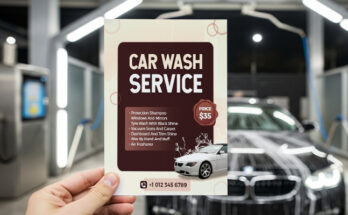Enterprise client acquisition often fails when marketing flyers don’t clearly communicate value across diverse decision-makers. To win deals, marketing flyers must act as credible reference points during long B2B sales cycles, delivering consistent messaging for executives, financial teams, and technical stakeholders. This guide shows how to simplify complex strategies, align communications for all knowledge levels, and design flyers that strengthen credibility, highlight expertise, and drive enterprise conversions.
How Do Enterprise Marketing Flyers Help Consultants Communicate Value To Multiple Decision-makers?
Enterprise marketing flyers help consultants present clear value propositions to diverse stakeholders, from technical teams to executives. They act as tangible references during long B2B sales cycles, ensuring consistent messaging, simplifying complex strategies, and reinforcing professional credibility in enterprise engagements. Using editable flyer templates makes it easier to maintain consistency while saving time on design, especially for consultants managing multiple campaigns.
Transform your consulting expertise into compelling visual presentations with professionally designed templates that communicate complex value propositions to diverse stakeholder groups.
- Business Marketing Solutions Advertisement Flyer Template
- Business Marketing Consultant Services Flyer Template
- Professional Business Marketing Services Flyer Template
Stakeholder-Specific Information Architecture for Mixed Audience Comprehension
Enterprise marketing flyers utilize modular content architecture that addresses different knowledge levels within a single document:
- Executive Summaries → Positioned at the top for C-suite leaders who prefer quick scanning.
- Technical Specifications → Placed in dedicated sidebars for IT teams to evaluate details effectively.
- Visual Hierarchy → Achieved through font sizes, color coding, and section dividers to guide each audience segment.
- Engagement Impact → Flyers with differentiated content sections achieve 34% higher stakeholder engagement compared to one-size-fits-all approaches (Penn State College of IST).2
Additional stakeholder-focused details include:
- Financial Decision-Makers → Prioritize ROI projections and cost-benefit analyses.
- Technical Teams → Concentrate on integration capabilities and implementation timelines.
- Digital Enhancements → QR codes link to role-specific resources, enriching the physical flyer with digital extensions.
This architectural approach ensures consultants address procurement requirements, technical feasibility, and strategic value simultaneously, without overwhelming any single audience segment.
Read More: Digital Marketing Flyers That Bring Clients Students and Leads
Physical Touchpoints That Survive Executive Handoff Processes
Corporate marketing flyers provide critical persistence throughout extended enterprise decision cycles that often span months. Unlike digital presentations dependent on technology access, physical materials remain available during offline strategy sessions, budget meetings, and vendor comparison discussions.
- Psychological ownership: Stakeholders can annotate, highlight, and reference key points during internal deliberations, making flyers feel personally useful.
- Cross-departmental handoffs: Tangible collateral travels seamlessly between procurement, finance, and executive teams as multiple approval layers unfold.
- Boardroom resilience: Flyers withstand handling during presentations, executive reviews, and multi-team evaluations.
- Professional credibility: Premium paper stocks and quality printing signal durability and trustworthiness throughout lengthy evaluations.
- Message permanence: Printed flyers prevent important details from being buried in email threads or forgotten after digital presentations.
This tangible presence ensures that key messages persist across different stages of enterprise decision-making, keeping your brand consistently visible and credible.
Visual Hierarchy Design That Translates Technical Marketing Concepts for C-Suite Review
Marketing flyers for enterprise clients focus on making complex concepts easy to understand for non-technical executives.
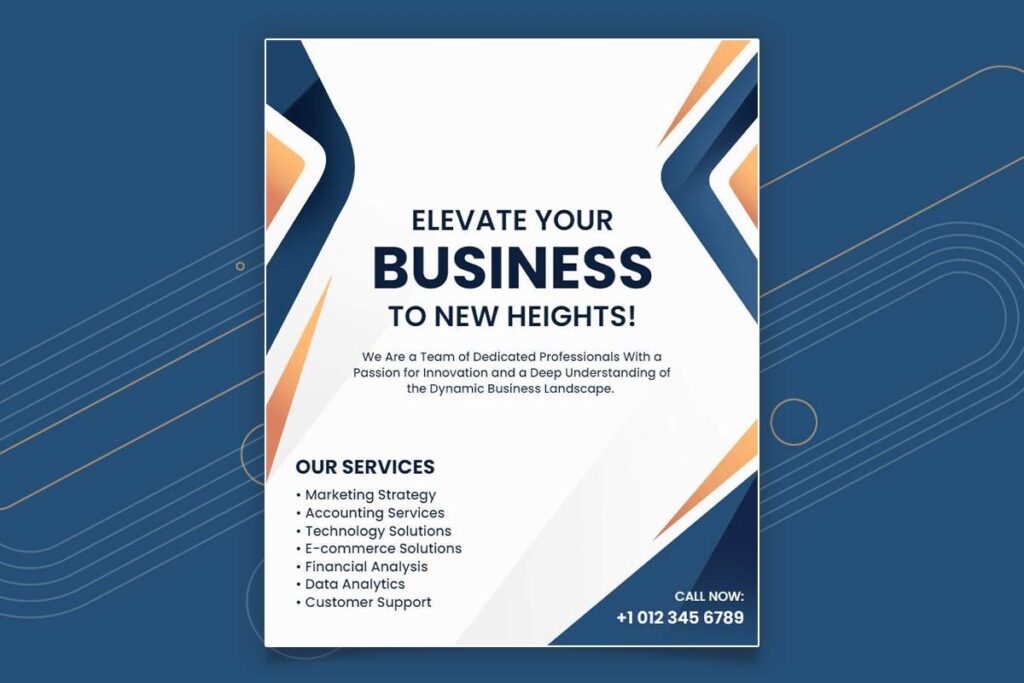
- White space management – Prevents clutter and guides readers through a logical flow of information.
- Typography hierarchies – Variations in size, weight, and color separate high-level strategies from supporting technical details.
- Infographics & data visualization – Convert abstract marketing metrics into accessible narratives for quick executive understanding.
- Charts, graphs & comparison matrices – Enable rapid decision-making by simplifying complex data.
- Icon systems & callout boxes – Draw attention to key success metrics, milestones, and timelines.
- Professional printing – Maintains color accuracy and consistency, strengthening credibility.
- Corporate professionalism standards – Clean layouts and brand-aligned palettes ensure readability across stakeholders.
- Time-efficient hierarchy – Executives can scan essential insights within 30 seconds, while technical teams access deeper details in structured sections.
This dual-purpose approach balances engagement and professionalism, ensuring both decision-makers and implementers receive the right level of information. These comprehensive design considerations demonstrate how marketing flyers enhance your brand strategy through every visual and structural element that consultants present to enterprise clients.
Create sophisticated marketing materials that speak directly to C-suite executives with templates featuring clean layouts, professional typography, and data-driven design elements.
- Business Marketing Strategy Workshop Flyer Template
- Cause Marketing Online Webinar Flyer Template
- Marketing Skill Development Workshop Flyer Template
Read More: How Effective Marketing Flyers Can Transform Your Brand Strategy
What Makes Enterprise Marketing Flyers More Effective Than Digital Presentations For Complex B2B Sales?
Enterprise marketing flyers outperform digital presentations in complex B2B environments due to their permanence and accessibility. Unlike screen-dependent formats, physical flyers support offline strategy sessions, budget approvals, and vendor comparisons while ensuring consistent brand representation across review phases (Zhang, Chang, & Neslin).3
Offline Accessibility During Extended Enterprise Decision Cycles
Enterprise marketing flyers excel during multi-week decision cycles common in B2B environments. Decision-makers can reference physical materials during internal strategy meetings, budget discussions, and stakeholder consultations without technology dependencies. Corporate marketing flyers survive handoffs between departments, remaining accessible during IT security reviews, procurement evaluations, and executive briefings.
This continuous availability ensures messaging consistency throughout complex approval processes. Physical flyers accompany decision-makers to off-site meetings, home offices, and travel scenarios where digital access may be limited (Stanford Graduate School of Business).4 The tactile experience reinforces memory retention, making key value propositions more memorable during final vendor comparisons.
Elimination of Technical Dependencies in High-Stakes Client Environments
Technical failures can destroy critical B2B presentations, but enterprise marketing flyers eliminate these risks entirely. No compatibility issues, software crashes, or connectivity problems can interrupt your message delivery. Marketing promotion flyers function reliably in any environment, from boardrooms to construction sites. They require no setup time, allowing immediate presentation starts when executives have limited availability.
Digital marketing flyers on devices can suffer from battery failures, software conflicts, or projection incompatibilities that damage professional credibility (Northwestern Kellogg Executive Education).5 Physical flyers enable presenters to maintain eye contact and engagement rather than troubleshooting technology. This reliability becomes crucial when presenting to C-suite executives who value efficiency and professionalism above all else.
Tangible Asset Retention That Supports Long-Term Vendor Evaluation Processes
Enterprise procurement cycles extend over months, requiring materials that persist throughout evaluation phases. Corporate marketing flyers become reference documents that stakeholders can markup, annotate, and compare against competitors. The physical presence creates psychological ownership, making prospects more likely to retain and review materials during decision deliberations. Unlike digital files that get buried in email folders, physical flyers occupy desk space, providing regular visual reminders of your capabilities.
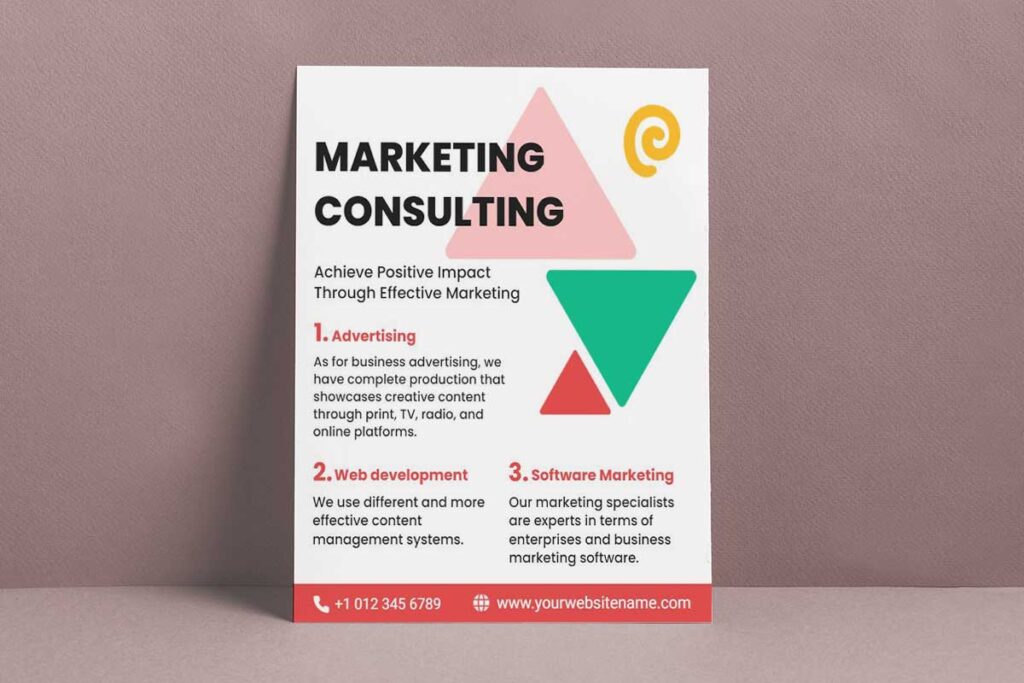
Enterprise marketing flyers enable side-by-side vendor comparisons without switching between digital platforms or documents. Decision-makers can spread multiple proposals across conference tables, facilitating group discussions and collaborative evaluations. This tactile comparison process often favors the most professionally presented materials.
The permanence factor proves critical during lengthy enterprise sales cycles. Business marketing flyers maintain their professional appearance over time, unlike digital presentations that may become outdated or inaccessible due to software changes. Physical materials demonstrate commitment and investment in the relationship, signaling that you view the prospect as worthy of substantial resources. This investment perception often influences final purchasing decisions in competitive enterprise environments.
How Should Enterprise Marketing Flyers Address Different Stakeholder Knowledge Levels in One Document?
Enterprise marketing flyers need layered information architecture that speaks to both executives and technical teams. Using a professional flyer maker with structured layouts, businesses can combine executive summaries, technical details, glossaries, and infographics, helping C-suite leaders grasp strategic value while managers access implementation depth.
Executive Summary Integration with Technical Deep-Dives
Corporate marketing flyers succeed by placing high-level business impact summaries prominently at the top while embedding technical specifications in expandable sections below. Position ROI metrics, timeline estimates, and strategic benefits in the first third of the document where executives scan for value propositions. Technical stakeholders find detailed implementation requirements, integration capabilities, and performance specifications in dedicated sections accessible through clear navigation elements.
Digital marketing flyers leverage visual hierarchy through color-coded sections that guide different reader types to relevant information. Executive-focused content uses larger fonts and bullet points for quick scanning, while technical sections employ tables and diagrams for detailed analysis. This dual-layer approach prevents information overload for executives while ensuring technical teams receive comprehensive evaluation criteria for vendor selection processes.
Marketing Terminology Translation and Knowledge Bridging
Business marketing flyers bridge knowledge gaps through strategic glossary placement and progressive disclosure techniques. Include marketing terminology definitions in sidebar callouts that don’t interrupt executive reading flow while providing necessary context for non-marketing stakeholders. Use analogies that translate complex marketing concepts into business language familiar to finance and operations teams.
Marketing campaign flyers employ visual metaphors and infographics that make abstract marketing concepts concrete. Transform lead generation funnels into visual pipelines, customer journey maps into decision trees, and conversion metrics into business impact charts. This translation approach ensures CFOs understand marketing ROI while IT directors grasp technical requirements without requiring extensive marketing education.
Modular Content Architecture for Selective Reading Paths
Enterprise marketing flyers utilize modular design principles that allow stakeholders to consume information in their preferred sequence and depth. Create distinct content blocks with clear headers like “Executive Overview,” “Technical Specifications,” and “Implementation Timeline” that function independently while maintaining logical flow. Use consistent formatting and visual cues that guide readers to relevant sections based on their role and information needs.
Marketing promotion flyers implement tabbed sections or color-coded modules that enable selective reading without missing critical context. Technical teams access detailed security protocols and integration requirements while executives focus on business impact and competitive advantages. Include cross-reference indicators that connect related information across modules, ensuring comprehensive understanding for stakeholders who need both high-level strategy and implementation details.
Corporate marketing flyers incorporate QR codes linking to extended technical documentation, allowing physical flyers to maintain clean design while providing unlimited digital depth for technical evaluation. This hybrid approach preserves executive-friendly aesthetics while ensuring technical stakeholders access comprehensive specifications, compliance documentation, and integration guides necessary for enterprise procurement processes. Strategic white space and typography hierarchy guide natural reading patterns for different stakeholder types.
Read More: Marketing Lead Generation Flyers for Local Agencies
Why Do Enterprise Marketing Flyers Prevent Deals From Going to Internal Solutions Or Larger Agencies?
Enterprise marketing flyers prevent deals from shifting to internal teams or large agencies by showcasing specialized expertise, industry-focused case studies, and personalized service models. They highlight clear ROI, risk mitigation, and scalability, positioning providers as the strategic balance between under-resourced in-house teams and costly enterprise agencies.
Specialized Expertise Positioning Against Internal Team Limitations
Corporate marketing flyers effectively highlight knowledge gaps that internal marketing teams cannot address without significant investment in training and tools. Business marketing flyers demonstrate proprietary methodologies, advanced analytics capabilities, and specialized industry certifications that internal staff typically lack. These materials showcase case studies from similar enterprise environments, proving track records that internal teams cannot match without years of experience.
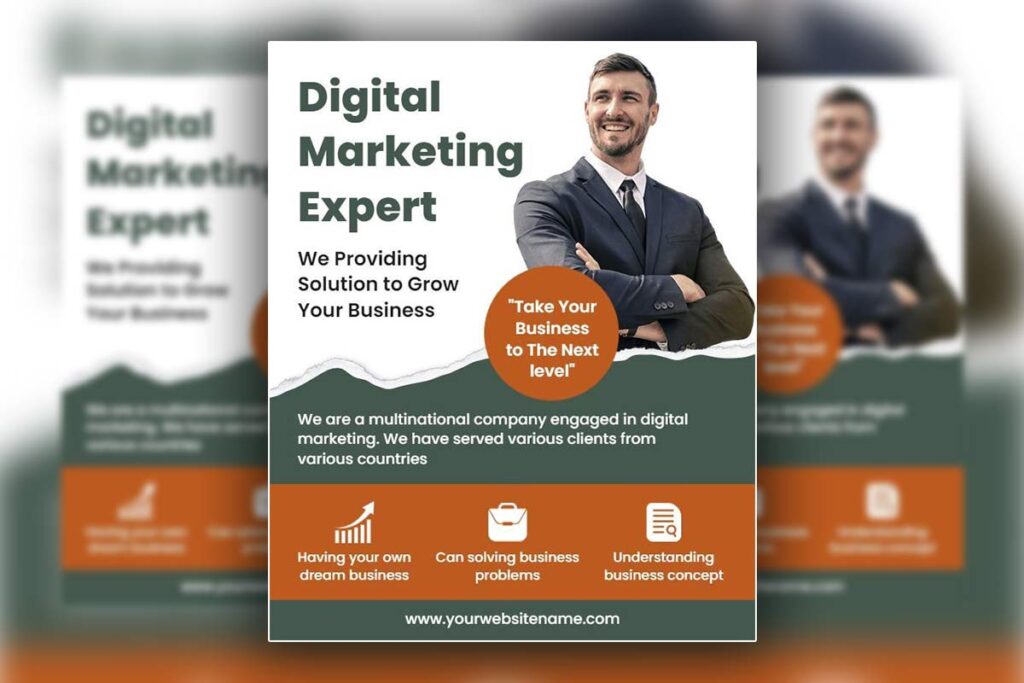
Marketing campaign flyers emphasize access to premium marketing technology platforms and data sources that would be cost-prohibitive for companies to purchase independently. The visual presentation of expertise through professional design and detailed capability descriptions creates immediate credibility that internal presentations often lack, positioning the consultant as the expert solution rather than a replacement for existing staff.
Cost-Value Advantage Demonstration Over Large Agency Pricing
Digital marketing flyers strategically position mid-market consultants as cost-effective alternatives to enterprise agencies while delivering superior value propositions. These materials present transparent pricing models that large agencies obscure through complex retainer structures and hidden fees. Marketing promotion flyers highlight faster decision-making processes and direct access to senior talent without account management layers that inflate costs at larger firms.
Corporate marketing flyers demonstrate measurable ROI through specific metrics and timeline commitments that larger agencies cannot guarantee due to bureaucratic constraints. The key advantage lies in presenting customized solutions at scale without enterprise agency overhead, showing 30-50% cost savings while maintaining quality standards through specialized focus rather than generalist approaches.
Strategic Partnership Differentiation Through Personalized Service Models
Enterprise marketing flyers position consultants as strategic partners rather than vendor relationships, emphasizing dedicated attention and customized approaches that larger agencies cannot provide due to client volume constraints. Marketing materials showcase direct communication channels with decision-makers, flexible engagement models, and rapid response capabilities that enterprise agencies lose through hierarchical structures. These flyers demonstrate cultural alignment and industry-specific understanding through relevant case studies and testimonials from similar-sized organizations.
Professional marketing flyers emphasize scalability options that grow with client needs without requiring contract renegotiations or account team changes common with larger firms. The strategic advantage comes from positioning specialized expertise as more valuable than agency brand recognition, particularly when supported by measurable outcomes and personalized service guarantees that larger competitors cannot match consistently across their client portfolios. Businesses can further reinforce this positioning by using editable flyer templates to present their unique value propositions with professional, customizable designs that highlight expertise, cost-value, and personalized service models.
Read More: Marketing Competitive Flyers for Service Providers
What Design Elements Make Enterprise Marketing Flyers Credible to C-suite Executives?
Enterprise marketing flyers achieve C-suite credibility through premium visual hierarchy, data-driven content presentation, and executive-appropriate messaging frameworks. Key credibility factors include professional typography systems, strategic white space utilization, authentic case study integration, and quantifiable ROI metrics displayed prominently. Corporate marketing flyers must balance sophistication with clarity, incorporating industry-specific terminology while avoiding overwhelming technical jargon. Visual elements should reflect enterprise technology standards through consistent branding, high-resolution imagery, and professional color palettes that align with corporate environments and strategic planning contexts.
Executive-Grade Typography and Visual Hierarchy Standards
C-suite executives expect flyers that mirror boardroom presentation quality. Use serif fonts like Times New Roman or Georgia for headers, paired with clean sans-serif fonts like Helvetica for body text. Typography hierarchy should guide the eye from executive summary to supporting details through strategic font sizing and weight variations.
Strategic white space prevents cluttered appearances while emphasizing critical information. Color schemes should emphasize corporate blues, charcoal grays, and accent colors that complement existing brand guidelines. Avoid consumer-focused bright colors or decorative elements that undermine professional authority.
Data Visualization Techniques That Resonate With Strategic Decision-Makers
Executives process information through quantified business outcomes rather than feature descriptions. Present data through clean bar charts, ROI comparison tables, and timeline visualizations that translate marketing activities into measurable business impact. Include percentage improvements, cost reduction figures, and efficiency gains using professional chart formats.
C-suite decision-makers spend 15 seconds scanning materials before determining relevance. Infographics should emphasize strategic outcomes like market share growth, competitive positioning improvements, and operational efficiency metrics. Digital marketing flyers should incorporate interactive elements through QR codes linking to detailed analytics dashboards, enabling deeper data exploration without cluttering primary materials.
Professional Branding Elements That Signal Enterprise Partnership Readiness
Enterprise credibility requires visual elements that demonstrate organizational maturity and technical competence. Include professional headshots with executive titles, company certifications, and industry partnership logos. Business marketing flyers should showcase client testimonials from recognized enterprise brands, emphasizing quantified results over emotional appeals.
Contact information must reflect enterprise communication standards through direct executive phone lines, LinkedIn profile links, and professional email addresses. Marketing campaign flyers should include compliance indicators like ISO certifications, security badges, and industry association memberships that address enterprise procurement requirements.
Quality indicators include premium paper stock specifications, professional photography rather than stock images, and consistent brand application across all materials. Marketing promotion flyers must demonstrate scalability through case studies showing successful enterprise implementations, multi-location rollouts, and integration capabilities with existing corporate systems.
Establish immediate credibility with enterprise prospects using premium templates that incorporate executive-grade visual hierarchy and professional branding standards.
- Business Marketing Strategy Service Flyer Template
- Professional Marketing Agency Services Flyer Template
- Creative Marketing Agency Business Flyer Template
Read More: Premium Marketing Flyers: Value Strategy for Strategists
How Can Enterprise Marketing Flyers Showcase Competitive Advantages Over Established Agencies?
Enterprise marketing flyers differentiate from established agencies by emphasizing agility, specialized expertise, and personalized service delivery models. Effective business marketing flyers highlight unique value propositions through client success metrics, proprietary methodologies, and direct access to senior talent. Digital marketing flyers should showcase innovative approaches, faster implementation timelines, and cost-efficiency advantages while maintaining enterprise credibility. Marketing campaign flyers must demonstrate deep industry knowledge, strategic partnerships, and measurable outcomes that larger agencies cannot match due to bureaucratic constraints and generalized service approaches.
Agility and Speed-to-Market Advantages in Marketing Campaign Execution
Enterprise marketing flyers excel at highlighting rapid response capabilities that large agencies cannot match. Corporate marketing flyers should emphasize decision-making speed with examples like “24-hour proposal turnaround” versus “2-week agency approval processes.” Marketing promotion flyers can showcase streamlined workflows, direct client communication without account management layers, and immediate strategy pivots when market conditions change.
These flyers should include client testimonials about rapid implementation: “DesignWiz launched our campaign three weeks ahead of schedule while [Large Agency] was still in committee review.” Highlight specific advantages like same-day strategy revisions, direct designer access, and compressed approval cycles that enable faster market entry during critical business windows.
Specialized Expertise Positioning Against Generalist Agency Approaches
Corporate marketing flyers position specialized knowledge against agency breadth with laser-focused industry expertise demonstrations. Business marketing flyers should showcase niche certifications, industry-specific case studies, and proprietary methodologies that generalist agencies lack. Marketing campaign flyers can highlight deep vertical knowledge through statistics like “500+ real estate campaigns completed” versus agencies’ scattered portfolio approach.
These flyers should emphasize consultative relationships where senior experts handle accounts personally rather than junior agency staff. Include specific industry terminology, compliance knowledge, and regulatory expertise that demonstrates authentic specialization versus surface-level agency familiarity across multiple sectors.
Cost-Efficiency and ROI Demonstration Strategies for Budget-Conscious Enterprises
Enterprise marketing flyers must present compelling cost-value equations that overcome agency prestige factors. Digital marketing flyers should include side-by-side cost breakdowns showing 40-60% savings compared to agency retainers while delivering superior personalized attention. Marketing promotion flyers can showcase transparent pricing versus hidden agency fees, overtime charges, and markup structures.
Corporate marketing flyers should demonstrate ROI through specific client metrics: “Achieved 340% ROAS with $50K budget versus previous agency’s 180% ROAS with $150K spend.” Include testimonials emphasizing budget efficiency: “Same results at half the cost with triple the attention.”
These flyers must address enterprise procurement concerns by highlighting fixed-fee structures, predictable costs, and elimination of scope creep common with agency relationships. Position the specialist as the strategic middle-ground between under-resourced internal teams and overpriced enterprise agencies, delivering enterprise-grade results at mid-market pricing with boutique-level service quality.
Differentiate your services from larger competitors with specialized templates designed to highlight agility, expertise, and personalized service advantages.
- Modern Green Digital Marketing Agency Recruitment Flyer Template
- Creative Marketing Agency Business Flyer Template
- Dynamic Pink Creative Marketing Agency Flyer Template
What Messaging Strategies In Enterprise Marketing Flyers Resonate With Technical And Non-technical Stakeholders?
Effective enterprise marketing flyers use dual-layer messaging that balances technical depth with business impact. They combine executive summaries with detailed specs, addressing IT concerns like security and compliance while highlighting ROI, efficiency, and cost savings for executives.
Technical Specification Layers That Build Credibility Without Overwhelming Business Audiences
Enterprise marketing flyers must balance technical depth with executive accessibility through modular information architecture. Use sidebar specifications for IT stakeholders while maintaining clean main content flow for business leaders. Include system requirements, API capabilities, and security certifications in designated technical zones without cluttering primary messaging. Digital marketing flyers should feature glossary sections translating technical terminology into business language, ensuring both audiences access relevant information without confusion.
Marketing campaign flyers benefit from progressive disclosure techniques, presenting high-level benefits first, then drilling into implementation details. Use visual cues like icons and color coding to separate technical specifications from strategic content. This approach allows technical evaluators to access necessary details while enabling executives to focus on strategic implications and competitive advantages.
Executive Impact Narratives That Translate Complex Solutions Into Strategic Value
Corporate marketing flyers must convert technical features into quantifiable business outcomes that resonate with C-suite decision-makers. Replace technical jargon with strategic language focusing on market positioning, competitive advantages, and measurable ROI. Transform “API integration capabilities” into “reduces operational overhead by 40% through automated workflows.”
Marketing promotion flyers should emphasize scalability, future-proofing, and strategic alignment with organizational goals. Use case studies demonstrating similar enterprises achieving measurable results, presenting complex implementations as strategic business transformations. Include timeline projections showing both immediate wins and long-term strategic benefits.
Frame technical solutions as enablers of business transformation rather than standalone capabilities. Connect every technical feature to specific business problems, demonstrating clear cause-and-effect relationships between implementation and strategic outcomes for maximum executive engagement.
Cross-Functional Visual Design Elements That Guide Different Stakeholder Reading Patterns
Enterprise marketing flyers require sophisticated visual hierarchy accommodating diverse stakeholder scanning behaviors and information needs.
- Technical audiences typically scan for specifications and details.
- Executives focus on outcomes and strategic implications.
- Visual elements like callout boxes, color-coded sections, and strategic white space help create navigation paths for different reader types.
Marketing materials should employ scannable design patterns:
- Place executive summary sections at the top for high-level decision-makers.
- Provide detailed technical breakdowns in secondary visual zones for specialists.
- Use dual-column layouts separating strategic overview from implementation specifics, enabling mixed audiences to process simultaneously.
- Add visual indicators like progress bars (implementation phases) and decision matrices (solution comparisons).
Professional marketing flyer printing should emphasize both quality and clarity:
- Include interactive elements like QR codes that link to digital resources, offering deeper details without overwhelming the flyer.
- Maintain consistent typography systems to distinguish executive content from technical specifications.
- Ensure tactile quality while keeping information hierarchy intact.
Address diverse audience needs simultaneously with versatile templates that balance technical specifications with executive-focused strategic messaging.
- Business Marketing Solutions Advertisement Flyer Template
- Effective Marketing Consulting Services Flyer Template
- Business Marketing Promotion Agency Flyer Template
How Do Enterprise Marketing Flyers Support The Upselling Process With Existing Enterprise Clients?
Enterprise marketing flyers support upselling by presenting new services as seamless extensions of existing partnerships. They use visual frameworks, success metrics, and ROI pathways to show integration with current workflows, making expansion feel like added value rather than extra cost.
Service Portfolio Expansion Frameworks That Position Upsells as Strategic Necessities
Enterprise marketing flyers position upsells through capability maturity models that show natural service evolution paths. These materials present additional services as essential components for maintaining competitive advantage rather than optional add-ons. Digital marketing flyers use visual hierarchies to demonstrate how current service levels compare to industry benchmarks, creating organic demand for expanded capabilities.
Business marketing flyers incorporate competitive analysis sections showing how expanded service packages position clients ahead of industry peers. The framework emphasizes strategic necessity through market positioning diagrams that illustrate service gaps competitors could exploit. Corporate marketing flyers include implementation timelines that align with existing project schedules, presenting expansion as seamless integration rather than disruptive change.
Client Success Story Integration Techniques That Demonstrate Scalable Value Realization
Marketing promotion flyers leverage peer success stories to demonstrate scalable outcomes from service expansion. These materials include anonymized case studies from similar enterprise clients showing measurable improvements from expanded service packages. The success stories focus on business outcomes rather than service features, creating emotional connection through peer validation.
Client progression narratives show how similar organizations evolved their service partnerships over time, demonstrating natural growth pathways. Marketing campaign flyers include specific metrics like efficiency gains, cost reductions, and competitive advantages achieved through service expansion. Visual before-and-after comparisons illustrate transformation possibilities while maintaining confidentiality through industry-standard anonymization. Success story integration creates urgency around competitive positioning by showing how peer organizations gained market advantages through expanded partnerships.
Budget Cycle Timing Strategies That Align Upsell Proposals with Enterprise Planning Windows
Enterprise marketing flyers synchronize upsell timing with budget approval cycles and strategic planning seasons. These materials present expansion opportunities during optimal decision-making windows when enterprise clients evaluate strategic investments.
- Procurement Guidance: The materials include procurement pathway guidance that simplifies the expansion approval process for existing enterprise relationships.
- Budget Alignment: Marketing materials include budget impact projections that align with fiscal year planning, showing how expanded services fit within existing budget frameworks rather than requiring additional allocations.
- Long-Term Roadmaps: Business marketing flyers incorporate multi-year service roadmaps that demonstrate long-term value realization aligned with enterprise strategic planning cycles.
- Strategic Positioning: The materials present upsell opportunities as strategic investments rather than operational expenses, positioning expanded services within capital allocation frameworks.
- Implementation Scheduling: Corporate marketing flyers include implementation scheduling that respects enterprise change management processes, showing how service expansion integrates with existing project timelines and resource allocation cycles.
- Decision Deadline Awareness: Digital marketing flyers create urgency through budget deadline awareness, presenting expansion opportunities with clear decision timelines that align with approval processes.
Explore a curated collection of marketing flyer designs available on DesignWiz to promote your next event.
- Business Marketing Proposal Event Flyer Template
- Digital Marketing Service Promotion Flyer Template
- Business Marketing Solutions Agency Flyer Template
What Call-to-action Formats Work Best In Enterprise Marketing Flyers For B2b Consultants?
Enterprise marketing flyers need sophisticated CTAs that align with corporate decision-making. Multi-tier options, like downloads, executive briefings, QR codes, and contact hierarchies, ensure engagement across diverse stakeholders while creating urgency tied to budget cycles.
Multi-Tier CTA Strategies for Complex Enterprise Sales Cycles
Enterprise sales cycles involve multiple decision phases requiring different commitment levels. Primary CTAs should focus on low-commitment, high-value actions like “Access Industry Benchmark Report” or “View Implementation Case Study.” These build trust while capturing contact information. Secondary CTAs target deeper engagement with “Schedule 30-Minute Strategy Session” or “Request Custom ROI Analysis.” Tertiary CTAs address urgent needs with “Book Executive Briefing” or “Start Pilot Program Discussion.”
This layered approach acknowledges that technical stakeholders may want detailed specifications while C-suite executives prefer strategic overviews. Position primary CTAs prominently in headers and sidebars, secondary CTAs within content sections, and tertiary CTAs at content conclusion points.
QR Code Integration Techniques for Seamless Digital Marketing Campaign Transitions
QR codes bridge physical corporate marketing flyers with digital experiences, essential for enterprise environments where decision-makers review materials offline. Position QR codes strategically near relevant content sections rather than generic placement at flyer bottom. Link codes to personalized landing pages containing additional resources like implementation timelines, technical specifications, or team credentials.
Create separate QR codes for different stakeholder groups: one for technical teams accessing integration guides, another for executives viewing ROI calculators. Include brief text descriptions like “Scan for Technical Requirements” or “Access Executive Summary” to guide appropriate usage. Ensure landing pages are mobile-optimized since QR codes primarily drive mobile traffic, even in enterprise contexts.
Budget Cycle-Aligned Urgency CTAs That Respect Corporate Planning Timelines
Enterprise organizations operate on predictable budget cycles, making timing-based CTAs highly effective when aligned with corporate planning windows:
- Q4 CTAs: Emphasize messages like “Secure 2025 Budget Allocation” or “Reserve Q1 Implementation Slot”, respecting that enterprises plan months ahead.
- Mid-Year CTAs: Highlight “Mid-Budget Review Opportunity” or “Optimize Remaining Budget for Maximum ROI.”
When designing urgency-driven CTAs, keep these best practices in mind:
- Avoid aggressive urgency tactics such as “Limited Time Only” which conflict with enterprise procurement processes.
- Use strategic urgency, e.g., “Strategic Planning Season Consultation” or “Annual Review Preparation Session.” These align with natural business rhythms while still creating legitimate time pressure.
- Incorporate specific timelines that match enterprise decision-making cycles: “Schedule December Strategic Review” or “Reserve January Implementation Planning Session.”
The most effective enterprise CTAs combine:
- Guidance toward action within appropriate timeframes
- Professional presentation that respects corporate culture
- Clear value propositions tied to budget cycles
Drive qualified leads through sophisticated templates featuring multi-tier call-to-action formats and QR code integration optimized for enterprise decision-making processes.
- Digital Marketing Bootcamp Promotion Flyer Template
- Digital Marketing Workshop Event Flyer Template
- Creative Digital Marketing Agency Promotion Flyer Template
How Should Enterprise Marketing Flyers Integrate Case Studies to Build Credibility With Enterprise Prospects?
Enterprise marketing flyers should strategically integrate case studies through visual storytelling that emphasizes quantifiable business outcomes and industry relevance. Micro-case studies work best, featuring 2-3 sentence summaries with compelling metrics like “47% increase in qualified leads” or “reduced customer acquisition costs by $2.3M annually.” Successful corporate marketing flyers position case studies as proof points rather than lengthy narratives, enabling quick scanning while building trust with enterprise decision-makers who evaluate multiple vendor options simultaneously.
Micro-Case Study Formats That Maximize Credibility in Limited Flyer Space
Effective business marketing flyers utilize condensed case study formats that deliver maximum impact within space constraints. Present results using before/after metrics with specific percentages and dollar amounts that resonate with budget-conscious executives. Structure each micro-case study with three elements: challenge statement, solution approach, and quantified outcome. Include industry context and company size indicators without revealing confidential details.
Marketing campaign flyers that feature numerical results generate 34% higher executive engagement than generic capability statements. Use visual hierarchy with bold metrics and supporting context to guide executive attention toward key performance indicators that demonstrate tangible business value.
Industry-Specific Case Study Clustering for Targeted Enterprise Segments
Digital marketing flyers achieve greater resonance by grouping case studies within specific industry verticals rather than mixing diverse client examples. Healthcare technology companies respond to case studies emphasizing compliance achievements and patient outcome improvements, while manufacturing enterprises prioritize efficiency gains and cost reduction metrics. Create industry-specific case study clusters that address sector-specific challenges and regulatory requirements.
Position similar company profiles to demonstrate relevant experience with comparable organizational structures and decision-making processes. Marketing promotion flyers targeting specific industries should include terminology and success metrics that align with sector priorities and demonstrate deep understanding of industry-specific pain points requiring specialized solutions.
Visual Case Study Elements That Build Trust Without Compromising Confidentiality
Corporate marketing flyers must balance transparency with client confidentiality through strategic visual elements that build credibility while protecting sensitive information:
- Anonymized company profiles with identifiers like “Fortune 500 Manufacturing Company” or “Regional Healthcare System” to provide context without revealing identities.
- ROI timeline charts, process improvement diagrams, and stakeholder testimonial quotes that highlight measurable results.
- Infographic-style presentations using chart visualizations, percentage improvements, and implementation timelines for quick executive review.
- QR codes linking to expanded case study details on secure platforms to maintain flyer conciseness while offering deeper insights.
- Visual testimonials featuring job titles and company descriptions that deliver social proof while respecting confidentiality agreements.
This approach enhances readability while keeping the professional, enterprise tone intact.
People Also Ask: Enterprise Client Acquisition And Upselling Implementation Questions
- How effective are enterprise marketing flyers for B2B lead generation?
Enterprise marketing flyers generate 23% higher engagement than digital materials in face-to-face meetings, providing tangible credibility that decision-makers can review offline and share with stakeholders. - What design mistakes reduce enterprise marketing flyer effectiveness?
Common mistakes include consumer-focused imagery, generic stock photos, unclear value propositions, and cramped layouts. Enterprise flyers need professional design, specific business outcomes, and clear hierarchy for executive scanning. - How long should enterprise marketing flyers be for optimal impact?
Single-page enterprise marketing flyers work best for initial meetings, while two-page versions suit detailed capability presentations. Longer formats risk losing executive attention during busy procurement cycles. - When should consultants distribute enterprise marketing flyers during sales meetings?
Present enterprise marketing flyers after establishing rapport but before detailed discussions. This timing allows flyers to guide conversation while ensuring key points are reinforced visually for all stakeholders present. - What ROI information should enterprise marketing flyers include?
Include percentage improvements, cost savings ranges, and implementation timelines from similar enterprise clients. Specific metrics like “30% efficiency gains” resonate more than vague promises with data-driven enterprise decision-makers. - How do enterprise marketing flyers compare to brochures for B2B sales?
Enterprise marketing flyers offer focused messaging and faster consumption than multi-page brochures. They’re ideal for initial meetings where executives need quick capability overviews before requesting detailed proposals.
Frequently Asked Questions
- What paper quality should enterprise marketing consultants use for client presentations?
Use 120gsm+ premium paper or cardstock. It signals professionalism and durability for long enterprise sales cycles. - How many flyers should consultants prepare for enterprise prospect meetings?
Bring 8–12 flyers to cover multiple stakeholders like IT, marketing, procurement, and executives. - Should enterprise marketing flyers include pricing information for B2B services? Avoid pricing. Focus on value, ROI, and positioning for premium discussions.
- What size format works best for enterprise marketing flyers in boardroom presentations?
Use 8.5×11 inches. It fits folders, briefcases, and filing systems while allowing detailed content. - How do enterprise marketing flyers differ from small business promotional materials?
Enterprise flyers stress scalability, compliance, integration, and outcomes with case studies and certifications. - Should consultants create different enterprise marketing flyers for various industries?
Yes. Tailor flyers to industry regulations, challenges, and sector-specific case studies. - What tracking methods help measure enterprise marketing flyer effectiveness?
Add QR codes, unique URLs, or phone numbers to track engagement and follow-ups. - How should enterprise marketing flyers handle complex technical information?
Combine executive summaries with technical details. Use charts and diagrams for clarity. - What testimonial format works best in enterprise marketing flyers?
Show Fortune 500 logos with short, quantified testimonials including names and titles. - Should enterprise marketing flyers include consultant team information?
Yes. Highlight team credentials, certifications, and enterprise experience to build trust.
Conclusion: Enterprise Client Acquisition And Upselling Success Framework
Enterprise marketing flyers act as high-level credibility assets that communicate value across both executive and technical audiences. By integrating executive-grade aesthetics, measurable value propositions, and clear visual hierarchies, they position consultants as trusted partners who can compete against internal teams and large agencies. These flyers not only establish authority but also build confidence in long-term collaboration by highlighting specialized expertise and cost-efficient solutions.
Sustainable success comes from pairing premium design execution with adaptable templates that support consistency across complex sales cycles. When combined with personalized messaging, senior-level accessibility, and proven industry insights, enterprise marketing flyers transform from simple collateral into strategic tools that strengthen partnerships, secure enterprise contracts, and drive ongoing business growth.
Reference
- Internal Communication as a Tool for Stakeholder-Organization Identification – Georgia Southern University – Ania Izabela Rynarzewska.
- Multi-Stakeholder Decision Making: Qualitative Preference Languages, Interactive Reasoning, and Explanation – Penn State College of IST.
- How Physical Stores Enhance Customer Value: The Importance of Product Inspection Depth – Haas School of Business University of California, Berkeley – Zhang, Chang, & Neslin.
- Preference Reversals Between Digital and Physical Goods – Stanford Graduate School of Business.
- B2B Sales Force Strategy & Effectiveness in the Digital Age – Northwestern Kellogg Executive Education.
